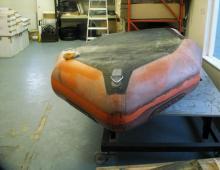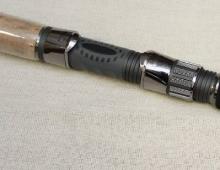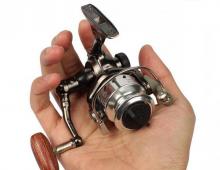Classification of jig or how not to get confused in the choice
Mormyshkas for winter fishing are used by almost all lovers of underwater fishing. There is a non-strict division of them into nozzle models and non-rewinders. In today's article we will try to answer all the questions related to this bait.
Name
Most anglers have never seen the mormysh itself, the amphipod that gives its name to the beloved lure. Even a popular text editor, we will not name which one, so as not to be accused of advertising, underlines its name with a red line, considering it a mistake, unlike the mormyshka itself.

Why exactly this crustacean gave the name to the bait is unknown, but there is an opinion that the jerky jumps that it makes during its movement are somewhat reminiscent of the game of a mormyshka when conducting in the water column.
Modern mormyshkas are very diverse in body shape, but rarely any of them resembles a crustacean that gave it its name.
What it is?
Before starting a detailed story about these artificial lures, you need to understand what a mormyshka is. At its core, this is a miniature lure or sinker with one or more hooks, designed for fishing with a nodding rod with or without a vegetable or animal bait.
Fishing with such tackle is carried out mainly in winter, although there are also summer mormyshkas for catching fish with a fishing rod with a side nod.
Mormyshka is a purely Russian bait. This is evidenced by her names in other languages, she has the names “Mormyschka” or “Mormishka” there.
Even Sabaneev himself did not yet call her by her current name, but spoke of her in the “Fishing Calendar” like this:
... on the Ob in the first ice they catch perch on a very small bait ... They don’t pull such a bait, as in autumn, but quietly raise it and just as quietly lower it. When the ice gets stronger, sponges and mormysh are caught on these baubles with a nozzle.
And another quote from the classic:
… this is not actually a lure, because it does not shine and should not shine. Its purpose is to make it look like a bug in its shape, and to sink the hook to the bottom with its weight. The fish grabs it because it has a bait on its hook.
purpose
Fishing with a mormyshka, in contrast to mounting with a sinker and a hook, is more active, with its play it better tempts the fish to bite, which is impossible to do with stationary tackle. A variety of shapes and options for postings allows you to catch various types of fish, both peaceful and predatory, with this tackle.
Mormyshkas are used for winter fishing and in combination with hooks or spinners. Larger models are used to bait pieces of meat or fish to catch predators such as rotan or pike perch.
Sometimes even a toothy pike is not averse to eating bloodworms, planted on the hook of a “shot” or “droplet”.
Classification
Mormyshkas for winter fishing are classified according to many parameters, and we will try to highlight them in our article. The main factors influencing the choice of bait are:
- nozzle application;
- material of manufacture and specific gravity;
- the size;
- Colour;
- fastening method;
- the form.
The first criterion, with or without a nozzle, is the main one when buying a jig. If, when using bait, the shape of the mormyshka can be any, then for the bait its choice becomes decisive.

The material from which winter mormyshkas are made determines their specific gravity. Often the choice of the wiring horizon and the method of fishing depends on this. So, by weight, microblades are:
- Lungs. Such baits are made of plastic or sheet metal without soldering. They are used as gliders in the water column or on diversion leashes.
- Medium. They are smelted from tin or cut from non-ferrous sheet metal, such as brass, with lead welding. They are used when fishing at shallow depths, they are easy to do with your own hands.
- Heavy. Lead mormyshki, the most common material at present for both simple products and non-reel models.
- Heavyweight. Tungsten jigs with the same volume are 2.7 times heavier than lead analogs. In view of the greater cost, their use is advisable only at great depths, where an ordinary lead shot falls for too long.

Depending on the size, winter mormyshki are:
- small ones - actually for mormyshing;
- medium - for fishing in the course;
- large - for planting pieces of meat or fish when catching a predator.

According to the type of coloring, mormyshkas can conditionally be divided into several types:
- dark: black and gray;
- silvery sheen;
- golden shine;
- phosphorus mormyshki;
- luminous mormyshki;
- painted with paints;
Phosphorus and luminous mormyshkas are used when fishing at great depths.

According to the method of attachment, you can choose two options for the bait:
- with an eye;
- with a hole in the body.
To talk about the forms of mormyshkas, you will have to start a new chapter.
Popular types of mormyshkas
Each angler has his most catchy mormyshkas. So that in the future the selection of a set of baits even for beginners does not cause difficulties, let's get acquainted with their most popular types.
- Pellet. Product in the form of a ball with a single hook. Ideal for bait fishing. Tungsten mormyshki for fishing with bloodworms at depth are also often made in the form of a pellet.
- Droplet. It is also most commonly used in line fishing.
- Oatmeal, or oatmeal. Mormyshka in the form of a grain of oats. Transitional option from packed to.
- Uralka. It looks like an elongated and bent inward drop. Due to their simplicity and attractive animation for fish, these catchy mormyshkas are one of the most popular non-revolvers.
- Devil. Winderless vertical suspension with soldered or suspended tee. Super popular model. Mormyshka devil catches perch, sweat, and bream!
- Goat. Uralka with two hooks.
- Banana. The shape, and often the color of this model is similar to this overseas fruit.
- Cobra. The flat body of the revolver is in the shape of a snake's head. where the sting of the hook acts as a tongue.
- Cone. The name defines the form. The hook sticks out from the top of the figure.
- A bug or a bug looks like a Uralka if its inner part is cut to a plane.
- Jellyfish. Model with three movable hooks hanging from the wide part of the cone, sometimes called the "witch".
- Balda. It is also made in the form of a cone, the hooks to it are hung on pieces of fishing line.
- Nymph. It also looks like a Uralka, only more pot-bellied.
- Ant. A metal body segmented along its length.
- Carnation. Smooth straight metal cylinder with an eyelet. When putting on a pendant in the form of a ball, it is called a “nail ball”, when planting a glass cube, it is called a “nail cube”.
- A cat's or vigorous eye is a special case of a nail ball, in which a pupil is applied to the ball as an aiming current.
- Parrot. A drop painted in parrot colors, soldered on the outside of the hook.
- Perch eye. A large pellet painted under the eye of a fish. Favorite for perch fishing.
- Lesothka. The easiest model to make. It is enough to wrap the shank of the hook with a wire to get a forest, or as it is also called a “wire”.
Which of the described models is better to choose, you decide. Each person adapts to certain types of mormyshka, find your own.
A little about the nod
Most often, when asked how to choose a nod, it is advised to hang the mormyshka to its plate. It is considered optimal when it bends at an angle of 45 degrees. But there are anglers who are more comfortable playing with other deflection angles.
![]()
In addition, you need to take into account that a small angle gives a high-frequency game that perch likes, and a large deflection will provide smooth wiring for bream, roach or crucian.
fishing technique
Before we start describing how to fish with a mormyshka, we note the following. Regardless of the type of wiring, the best tactic is to perform a stop, pause and control hook at the end of the lift. It happens that the fish accompanies the bait to the end and is tempted only after it stops.

Mormyshka fishing has many wiring options, it depends on the fishing conditions, on the type of fish, on the shape of the bait. We will describe some of the most popular techniques of the game, since to talk about all the possible postings, you will need to write a separate article.
Step wiring
- Lower the mormyshka to the bottom.
- Move or tap on it.
- Begin the ascent with a swaying motion, reminiscent of climbing stairs.
- Large amplitude and low frequency for cyprinids, fast play with low amplitude for perch.
Smooth wiring
- Touch the bait to the bottom.
- Gently lift up 10-15 centimeters.
- Pause for 5-10 seconds.
- Alternate such under rises and pauses until reaching the top of the wiring.
lowering
- From a height of a meter, we smoothly lower the mormyshka to the bottom with smooth and uniform swings.
- We raise in the same manner by 40 centimeters.
- We drop to the bottom.
- We raise it by 80 centimeters.
- We repeat the cycle.



